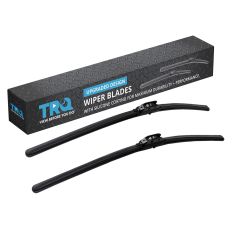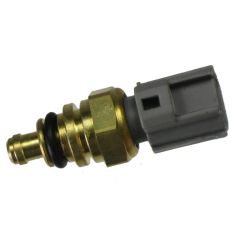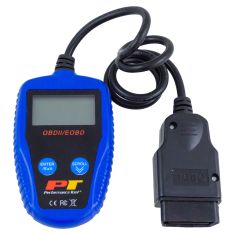Replaces
2007 Jaguar XKR Coolant Temperature Sensor TRQ ECA92510
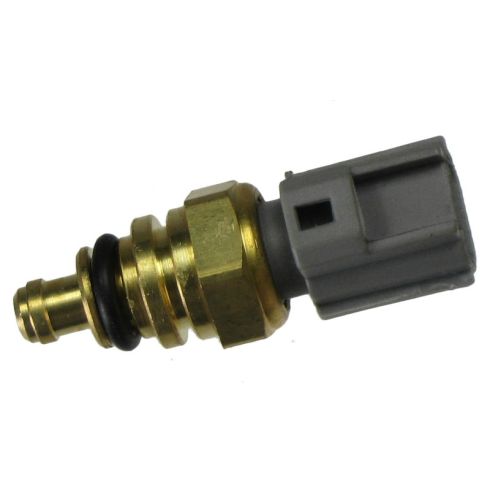



ECA92510
This part doesn’t fit a . Select from parts that fit.
Specify your vehicle's year, make and model to guarantee fit.
This part does not fit a .
Buy in the next and
Get it by: Saturday, Dec 06 with expedited shipping
Recommended for your 2007 Jaguar XKR
Frequently bought together
Specify your vehicle's year, make and model to guarantee fit.
This part does not fit a .
About TRQ:
TRQ is a trusted brand dedicated to making every repair a success story by combining premium parts with easy installation. Each TRQ part is engineered by a team of automotive experts to meet or exceed OEM standards, delivering enhanced performance and maximum longevity. With rigorous in-house testing, the brand ensures superior fit and function across every product line. TRQ also provides customers with best-in-class, step-by-step installation videos—so you can complete repairs with confidence, whether you're a first-time DIYer or an industry professional.
Returns: Parts with electrical components cannot be returned once installed.
Attention California Customers:
![]() WARNING: This product can expose you to chemicals including Lead and Lead Compounds, which are known to the State of California to cause cancer, and birth defects or other reproductive harm. For more information, go to www.P65Warnings.ca.gov.
WARNING: This product can expose you to chemicals including Lead and Lead Compounds, which are known to the State of California to cause cancer, and birth defects or other reproductive harm. For more information, go to www.P65Warnings.ca.gov.
Lifetime Warranty
This item is backed by our limited lifetime warranty. In the event that this item should fail due to manufacturing defects during intended use, we will replace the part free of charge. This warranty covers the cost of the part only.
Returns: Parts with electrical components cannot be returned once installed.
FREE Shipping is standard on Orders shipped to the lower 48 States (Contiguous United States). Standard shipping charges apply to Hawaii, Alaska and US Territories. Shipping is not available to Canada.
Expedited is available on checkout to the United States, excluding Alaska, Hawaii and US Territories as well as P.O. Boxes and APO/FPO/DPO addresses. Final shipping costs are available at checkout.

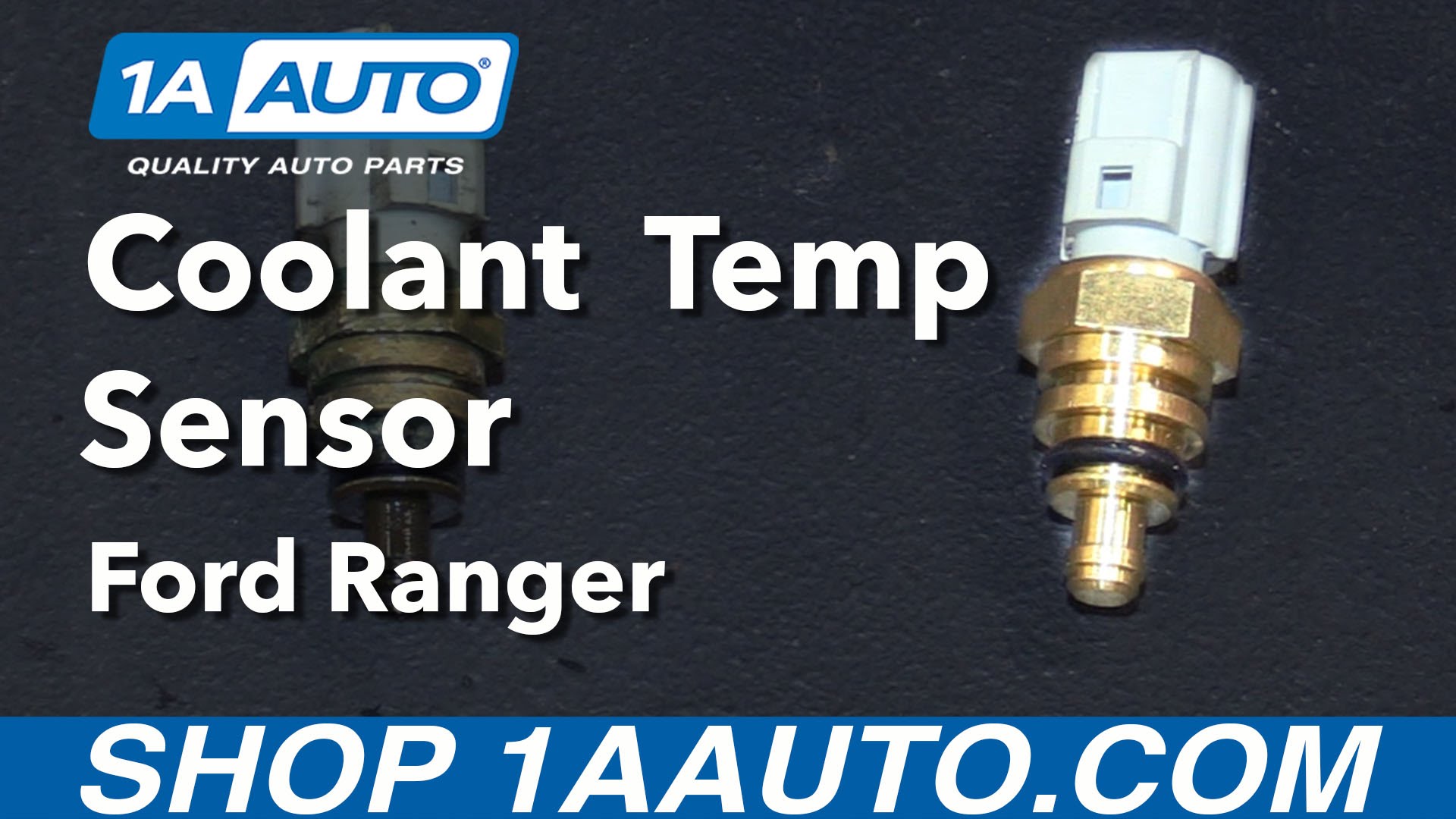
Created on:
Tools used
- Remove the radiator cap by turning counterclockwise Remove the four 10mm bolts securing the cover underneath the radiator Pull the cover down Have a drain pan ready Open up the plug with a 19mm wrench Let the radiator drain Hand-tighten the plug
- Remove the Phillips head screws from the throttle body cover Remove the 7mm bolt from the throttle body cover Remove the breather hose from the intake hose Remove the intake hose
- Remove the 13mm alternator bolt Move the wiring harness Have a drain pan ready Compress and slide the hose clamp nearest the radiator back Twist off the radiator hose off of the radiator Let the hose drain Compress and slide the second hose clamp back Remove the radiator hose from the water pump
- Remove the three 8mm bolts from the thermostat cover Remove the cover Remove the thermostat
- Remove the lock clip with a pair of pliers Pry the sensor up with a flat blade screwdriver Disconnect the wiring harness
- Insert the sensor into place Connect the sensor wiring harness Insert the lock clip to the sensor
- Insert the thermostat into place Press on the cover Tighten the three 8mm bolts to the cover
- Tighten the 13mm bolt to the wiring harness bracket on the alternator Connect the radiator hose to the water pump Tighten the clamp to the hose Connect the radiator hose to the radiator Tighten the clamp to the hose
- Insert the intake tube to the air box and throttle body Tighten the hose clamps with a flat blade screwdriver Reconnect the breather hose
- Fill the radiator with the appropriate mixture Leave the radiator cap off Leave the funnel in the radiator Place a drain pan beneath the radiator Put the fan on the lowest setting Put the heat on the highest setting Run the vehicle Watch the air bubbles Refill coolant as needed while the vehicle is running Let the coolant reach operating temperature Wait for the coolant level to stop dropping Check for heat to come out of the vents Turn the vehicle off Reinstall the radiator cap Top off the overflow bottle if necessary Test drive the vehicle and monitor the coolant levels
Brought to you by 1AAuto.com, your source for quality replacement parts and the best service on the Internet.
Hi, I'm Mike from 1A Auto. I hope this how-to video helps you out, and next time you need parts for your vehicle, think of 1AAuto.com. Thanks!
In this video, we're going to be working with our 2001 Ford Ranger 4.0-liter V6. We're going to show you how to remove and replace the coolant temp sensor. This is located behind the thermostat on this truck, so since we're going to have that thermostat and housing out anyway, we're going to go ahead and recommend you change the thermostat while you're in there.
If you like this video, please click Subscribe. We have a ton more information on this truck, as well as many other makes and models. If you need this part for your vehicle, you can follow the link down in the description over to 1AAuto.com.
Here are the items you'll need for this repair: 7-13mm sockets, ratchet, socket extensions, u-joints, drain bucket, 19mm wrench, Phillips screwdriver, flat blade screwdriver, needle nose pliers, coolant, and funnel.
Remove the radiator cap at the top of the radiator on the driver's side. Simply push down and turn counterclockwise. Remove the four 10mm bolts securing this plastic cover underneath the radiator. We're going to use a socket, ratchet and a long extension for this. We put our vehicle on the lift to make it easier to show you, but you should be able to do this job with the vehicle on the ground.
You may need a flat blade screwdriver to remove the plastic push-pins securing it in, but usually you can just grab both sides and pull down. Set up a drain bucket underneath your drain plug, which is located on the passenger side of the radiator at the bottom. We'll open up the petcock with a 19mm wrench. Don't open the drain plug all the way, as coolant will come out the end where the plug sits in. We'll crack it loose until it starts draining and wait for the radiator to be completely empty.
Reinstall the petcock by hand. Just wipe that little bit of drip off the bottom there. Remove our drain bucket. If you're doing this on the ground or on jack stands, you may want to leave the drain bucket under there to catch any excess coolant that comes out of the system. We're going to place our low level drain bucket underneath the truck while we finish the repairs.
We're going to remove this cover over the throttle body. Use a small Phillip's head screwdriver to remove these two screws, and a seven millimeter socket and ratchet for the bolt in the back. Remove the cover from the intake.
We're going to use a flat blade screwdriver to loosen these two screw type clamps on our intake tube. We'll then wiggle the tube off of the MAF sensor on the throttle body and remove it from the vehicle. You'll also have to remove this breather line from the back, so we'll remove the intake tube from the throttle body and the MAF, pull it straight off the breather and remove it from the vehicle.
Remove the top alternator bolt with a 13 millimeter socket and ratchet. You may need an extension to get a little more room. There's no need to disconnect the battery here because we're only doing this so we can move the wiring harness a little out of the way. I'll remove the bracket. We have a little more slack to get the harness out of the way of our thermostat.
Our upper radiator hose which runs from the radiator at the top on the passenger side, up and around to our thermostat housing under the throttle body, can be removed with a pair of needle nose pliers. We'll remove this clamp, we'll take the hose off of our thermostat so we can remove the cover. Squeeze the spring clamp together with the pliers and once the tension's off, you can remove it from the end of the hose. Once the clamp is off, you can remove the hose. Take that clamp out of the way while you're there.
We're going to use an 8 millimeter socket ratchet extension and a U-joint. We may have to use a wrench to get to these three 8 millimeter bolts on the thermostat cover. Once the bolts are out and with the thermostat housing cover loose, remove it from the vehicle. We'll reach down, pop out the thermostat and remove that as well.
The coolant temp sensor's located below the intake manifold, just behind the thermostat housing that we've just removed. There's a small clip at the bottom. The one we are looking for is the one here on the driver's side. There's a small lock clip at the bottom that we can grab with a pair of needle nose pliers. Simply pull out toward the driver's side to remove it. Be very careful not to lose this clip.
This sensor is a little tricky. You have to go in, pry it up with a flat blade screwdriver. Try to reach in from the other side and pull the sensor toward the front of the truck while lifting up at the same time. There's really only one angle it's going to come out at, so you got to work it around a little. Be very careful not to break the connector at the top, then we'll push down on the connector, and remove our sensor from the vehicle.
Here we have our old coolant temp sensor that we removed from our vehicle, and our new part from 1AAuto.com. As you can see, these parts are exactly the same. They have the same probe to go down into the coolant, same O-ring here, same channel for that little snap ring we removed to get them out, and the same 2-pin electrical connector at the top. This new part from 1A Auto is going to go in direct fit, just like your original equipment, and fix you up right.
Reconnect the sensor into the electrical connector. Set the sensor back into its slot. You may need the flat blade screwdriver to help make sure it seats fully into place. Line the clip back up into the slot, and slide it into place.
Take your new thermostat, and install the gasket over the top. Install the thermostat into the opening, and reinstall the cover. You can see that this is uneven so it's only going to go on one way. You're going to want it to face out the passenger side. You're going to have to move the wiring harness a little bit to get it into place and over the studs. Press it down and reinstall your hardware. You use that same 8 millimeter socket, ratchet and universal joint along with an extension to tighten down those 8 millimeter bolts.
Reinstall the bracket for the harness at the top of the alternator and the 13 millimeter bolt. Tighten that down with a socket and ratchet.
I like to replace those spring style clamps with these screw on band clamps, because these we can always make tighter as time goes on; where the spring steel one's tend to wear out over time, and they can leak or they can break, plus they're a lot more difficult to remove and install, especially in tight places.
We're going to change ours out with a band clamps and tighten them down with a screwdriver. If you're reusing your spring style ones, you would just install them with pliers by compressing them and sliding them over in the opposite fashion than we removed them. See, this can be easily accessed with a screwdriver, with the spring style we have to try to fight a pair of pliers underneath while keeping it compressed. I feel like it's a lot to have going on, and, again, if this ever starts leaking, we can just reach in here with a screwdriver, nice and easy, and tighten it up.
Reinstall the breather line in both ends of the intake tube to the throttle body and the air box. Tighten down the clamps with a flat blade screwdriver.
Reinstall the engine cover. We’ll tighten down the front two screws with the Phillips head screwdriver and the rear with the 7 millimeter socket. Reinstall the bottom cover. Remember it has the plastic clips to help you line it up. Then install the four 10 millimeter bolts with the socket, ratchet, and extension. There are two on each side.
Any time this coolant level has been dropped, you'll have to bleed the system the way you see here. We're going to refill it with a 50/50 mix of the coolant designated for our truck, as well as distilled water to get the proper mixture. We'll then fill the radiator through this funnel back up to the top level, run our vehicle up to temperature with the fan on the lowest setting and the highest heat we have to make sure that that air, if built up in the heater core, circulates through fully and removes any air pockets from our system before we test drive it and confirm our repair.
Make sure the petcock on your radiator is closed if you opened it to drain the system and always use a funnel and a drain bucket to prevent any spills when filling the system. After filling the radiator completely, start the vehicle with the radiator cap off and a drain bucket underneath. Set your fan for the heat to the lowest speed and the heat to the highest setting blowing out of the vents so we can monitor the temperature coming out of the heater core. While the vehicle is running, you'll notice air bubbles coming out of that filler neck. Be sure to keep an eye on that and keep the level up top throughout this process. You can see here that our vehicle needs more coolant.
This means that our vehicle has probably gotten up to temp and that thermostat is open allowing the air inside of the block to be pushed out by the coolant in the rest of the cooling system. With a quick check inside the vehicle we can see that our coolant temp gauge on our dash has gotten up to the normal operating temperature, so we know our thermostat is open and allowed the coolant to circulate into the block, pushing that air out. Now we just need to wait for the level to stop dropping so we know our coolant is full and check that we have proper operation of the heat to be sure that the heater core has had all those air bubbles pushed out as well.
Now that we have heat coming out of our vents, the bubbling has stopped and our radiator has maintained its level for a little while now. We’ll shut the vehicle off, and remove our funnel. Level stayed right up top. We'll reinstall our cap. The level in our radiator overflow tank, which is located here, hasn't changed so there's no need to touch that, but you can top it off if necessary. Now we'll wash down any spilled coolant off of our engine and test drive our vehicle. Always be sure to monitor your cooling temperatures any time you have to bleed the system on the initial test drive to be sure the vehicle doesn't overheat.
Thanks for tuning in. We hope this video helped you out. Next time you need parts for your car, please visit 1AAuto.com. Also check out our other helpful how-to and diagnosis videos.
ECA92510
877-844-3393
Monday - Friday 8:00am - 9:30pm ET
Saturday - Sunday 8:00am - 4:30pm ET
Specify your vehicle's year, make and model to guarantee fit.
This part does not fit a .


